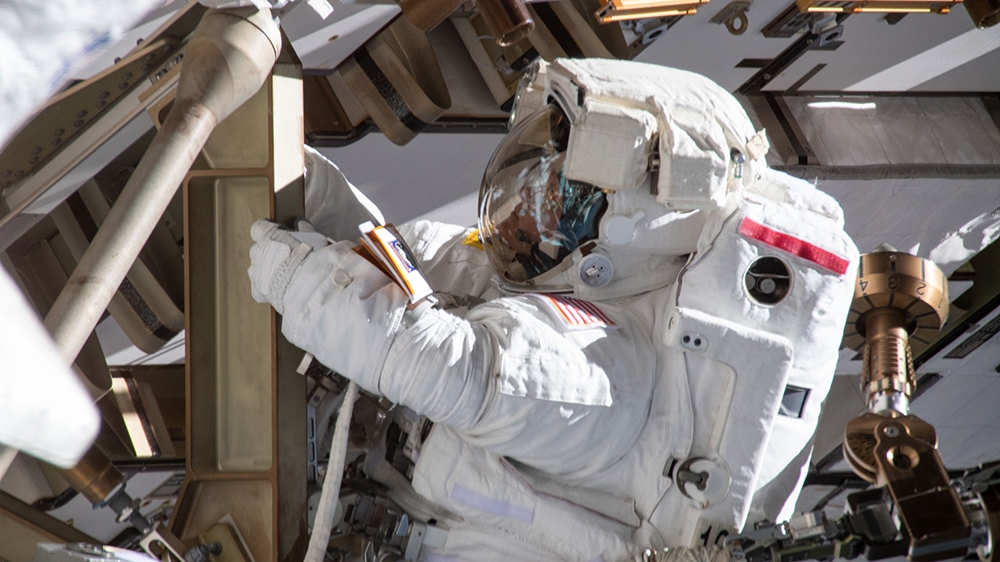NASA scraps all-women spacewalk for lack of well-fitting suits
The United States space agency NASA scrapped on Monday a planned historic spacewalk by two women astronauts, citing a lack of available spacesuits that would fit them at the International Space Station (ISS).
Christina Koch will now perform tasks in space on Friday with fellow American Nick Hague – instead of Anne McClain as originally planned.
Had Koch and McClain done their spacewalk together, it would have been the first ever by two women astronauts.
Until now, male-only or mixed male-female teams had conducted spacewalks since the space station was assembled in 1998. Since then there have been a total of 214 spacewalks.
McClain worked outside the station last week – with Hague – when she realised that a size medium upper half spacesuit fit her better.
“Because only one medium-size torso can be made ready by Friday, March 29, Koch will wear it,” NASA explained.
The spacesuits on board the ISS are in fact assemblies of several parts put together as best adapted to each astronaut’s body, explained Brandi Dean, spokeswoman of the Johnson Space Center in Houston, Texas where American astronauts are based.
She said two upper parts in each of the three available spacesuit sizes are currently held at the ISS: medium, large and extra large.
“We do our best to anticipate the spacesuit sizes that each astronaut will need, based on the spacesuit size they wore in training on the ground, and in some cases astronauts train in multiple sizes,” she said while explaining the problem that hampered Friday’s planned spacewalk.
“However, individuals’ sizing needs may change when they are on orbit, in response to the changes living in microgravity can bring about in a body.
“In addition, no one training environment can fully simulate performing a spacewalk in microgravity, and an individual may find that their sizing preferences change in space.”
 |
| This image made available by NASA shows astronaut Anne McClain working on March 22, 2019, on the International Space Station’s Port-4 truss structure [HO/NASA/AFP] |




